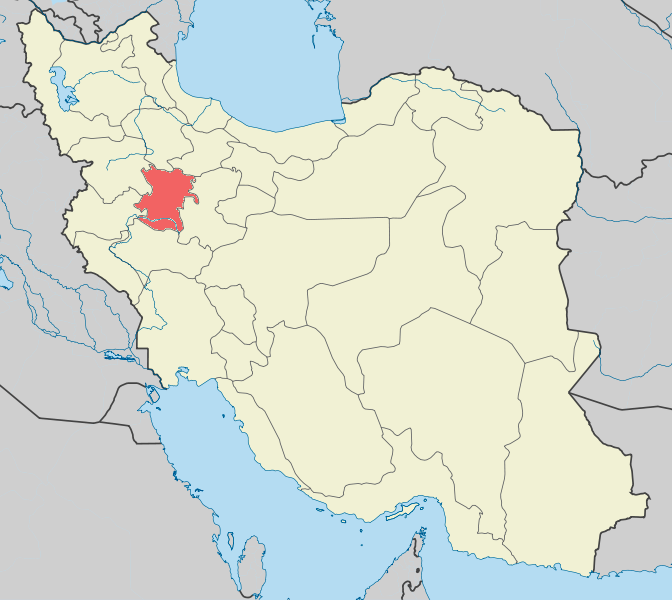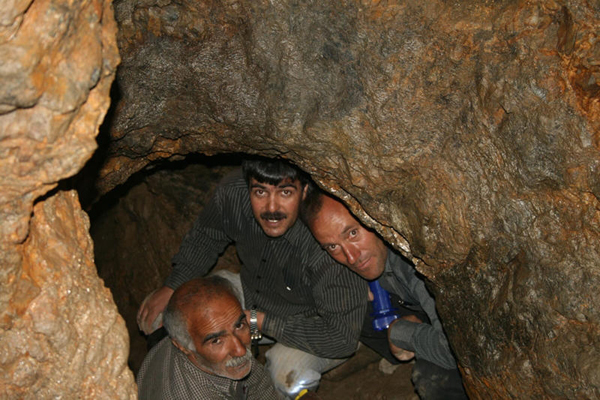
© Unknown
An ancient network of secret tunnels and dwellings has been discovered in Hamedan Province.The Iranian province lies in an elevated region, with the 'Alvand' mountains, running from the north west to the south west.
The discovered complex is located near the village of Arzanfud, 25 kilometres southeast of the provincial capital-city of Hamedan, the Hamedan Cultural Heritage, Tourism and Handicrafts Department (HCHTHD) announced Saturday in a press release.
The complex is believed to have been used by habitants as a shelter during wars.
The entrance to the subterranean complex which is hidden or disguised yet to be discovered, but at the moment it is accessible through an original ventilation shaft, widened by HCHTHD's experts for access.
There are holes carved in the walls, which had been made to hold early light fixtures. A cot has also been identified in the structure.
A number of stone rings and clasps have also been among the discovered artefacts.
According to initial studies, the city likely dates back to the first Iranian dynasty, the Medes (728-550 BCE) or much later to the Parthian dynasty (248 BCE - 224 CE).
Since March 2009, Iranian archaeologists are banned giving interviews or reveal any information about the ICHTHO or the status of Iranian archaeology. By implementing such a ban the theocratic-totalitarian regime has closed the only reliable avenue for obtaining the accurate information about the status of the archaeological discoveries and the cultural treasures recovered from the sites.
By some reports, the number of priceless artefacts passed to the Iranian museums by ICHTHO, especially those made of precious metals recovered from the sites have been fallen drastically.

© CAISThe ventilation shaft, currently the only entrance to the subterranean complex.
The illicit antiquities trade and selling Iranian historical relics to the European markets and private collectors worldwide has become one of the most lucrative revenues for the ruling clerics and their families.
Since the rise of the Islamic Regime to power in 1979, not only the smuggling and looting of Iranian art and antiquity, but a deliberate destruction, mainly Iran's pre-Islamic heritage have been systematic and widespread. These destructions have been increased since the appointment of Mahmood Ahmadinajad as the president by the Ali Khamanei, the regime's Spiritual Leader.
Historical background:Hamedan province is one of the most ancient parts of Iran and its civilisation. Today's it capital city of same name, is the remains of the ancient Ecbatana.
According to historical records, there was once a castle in this city by the name of Haft Hessar (Seven Walls) which had a thousand rooms and its grandeur equalled that of the Babylon Tower.
The foundation of city are related to Diya Aku, a the first Iranian historical King, who founded the first Iranian dynasty, the Medes.
During the third Iranian dynasty, the Parthians, Ctesiphon was chosen as the political and winter capital of the empire and Hamedan became the summer capital and residence of the Arasacid King of Kinds. After the the fall of Parthian dynasty, the Sasanian dynasty (224-651 CE) constructed their summer palaces in Hamedan as well.
After the battle of Nahavand in 642 CE, Hamedan fell to the hands of the invading Arabs; the city was pillaged, the most of the inhabitants were massacred and the survivors forced to accept Islam.
Avicenna (c. 980 - 1037 also Pur Sina, Ibn Sina), the foremost Persian physician, philosopher and one of the world's greatest polymath is buried in that city.
Man was forced to live underground for a long period while the solar system was finding equilibrium.
They had better not let on about "artefacts" or else the US will invade and their museums will be sacked!